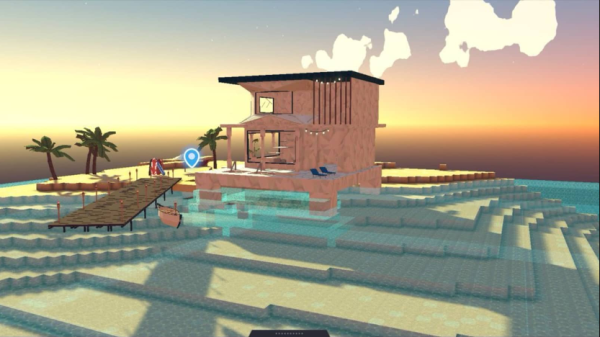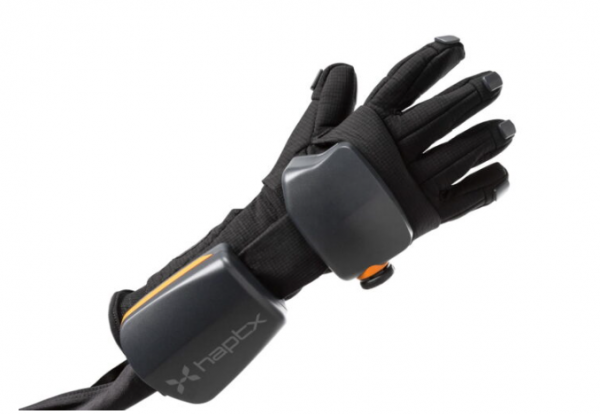What is the Metaverse Real Estate
The metaverse economy is growing exponentially. As the technology evolves and the user base expands, the metaverse is shaping up into a multi-billion-dollar virtual economy. Top brands are joining the metaverse, attracted by the infinite possibilities it offers in its pixelated world.

Brands are seeing the metaverse as a new frontier and business opportunity. Through the metaverse, brands can create new spatial experiences that are richer, more engaging, and immersive and enable their customers to interact with their products in a refreshingly new way. The immersive environment also offers digital experiences that look and feel real and give customers a brand experience like no other. It is this interactive and immersive quality of the metaverse which is attracting most of the top brands. Some of the top brands even regard the metaverse as the inevitable future of the built environment. The potential of the metaverse and the rapid growth it has registered so far has attracted both investors and developers. Not only is the experiential aspect of the metaverse attractive to users but metaverse lots are also saleable and appreciate in value, just like physical real estate in the real world.
Understanding the Metaverse Real Estate
The metaverse real estate consists of virtual lots and buildings located in the metaverse. The metaverse is not a tangible world, at least not yet (it will be some time before haptics technology evolves to a level where we can convincingly “touch” our virtual experiences). The metaverse is, therefore, still largely a visual experience, but an experience that is increasingly manipulable through a constellation of inputs ranging from controllers to gaze tracking, hand tracking, and even artificial intelligence (AI) and machine learning.

The metaverse has no physical attributes. What is currently billed as the metaverse merely consists of a Second Life-style immersive pixelated world. Blockchain technologies and the whole digital asset ecosystem are now referred to as the metaverse, largely due to the proliferation of non-fungible tokens (NFTs) that is easily tied up to the immersive world that makes up the metaverse.
The pixelated world that constitutes the metaverse consists of programmable spaces that are located in virtual reality platforms. Virtual real estate in the metaverse can serve commercial functions akin to what actual physical real estate does. For instance, they can be used as virtual workspaces, meeting rooms, collaboration spaces, or as concert venues. They can even be rented out and used as advertising spaces.

The metaverse lots can be purchased by investors in multiple metaverse platforms. They, therefore, offer unique and one-of-a-kind real estate platforms whose uses are only limited by your imagination.
The platform can serve several functions. Like the World Wide Web, there is no single metaverse platform but a cascade of virtual platforms that together, constitute the metaverse. Some of the better-known metaverse platforms include Horizon Worlds, Decentraland, The Sandbox, Celebrity Atlas, and many others. These are some of the better-known virtual platforms for prime metaverse real estate.
How to Buy Metaverse Real Estate
Metaverse real estate currently represents one of the fastest-growing aspects of the metaverse, roping in billions of dollars in investments. Like the internet, metaverse real estate attracts people from diverse backgrounds and from across the globe.
Metaverse real estate can be monetized through advertising services. They can also be used to host events such as concerts or to deliver unique visitor experiences. Metaverse real estate can be rented or leased just like physical real estate. Investments in metaverse real estate are already profitable. Some of the metaverse landrush debuts have attracted hundreds of millions in investments.
A plot of land cost $20 in Decentraland’s metaverse land auction back in 2017. By 2021, parcels of land on Decentraland sold for as much as $6,000. The biggest boom in metaverse real estate was seen in 2022 with some metaverse lots selling for as much as $15,000.
To buy land in the metaverse, investors will need a virtual wallet with which to make all their transactions. A popular wallet for such metaverse land transactions is the browser-based wallet MetaMask. The digital wallet you use to buy metaverse land must be topped up with cryptocurrency as crypto is the currency of the virtual universe. Before embarking on a metaverse land purchase, it is prudent to study all the features of the metaverse platforms and make a comparison to find the metaverse real estate investment that suits you best.
Create a digital avatar of yourself and then go through the platform’s tutorial to acquaint yourself with the platform’s virtual ecosystem.
After selecting the virtual plot, proceed with the buying process. Buying up metaverse real estate must include the deed of ownership which consists of a unique code on the blockchain. The code provides proof of ownership of the virtual land. It is a virtual deed. Once purchased, the metaverse land can be put to the aforementioned uses including advertising, putting up a new metaverse building, or creating a new event space for hosting various kinds of virtual events such as promotions or virtual concerts.
Advantages of Investing in Metaverse Real Estate
The metaverse real estate is more than just a gimmick. For a new category of users, the metaverse is a real space where one can live out a virtual life, work, trade, play, and do a lot of the stuff that they do in the real life. With the evolution of XR hardware and new technologies such as haptics, eye-tracking, full-body tracking, and hand tracking, such experiences will be very real. In that sense, the metaverse will mimic the real world and create alternative spaces to live, work, meet, play, and trade.
The metaverse will be the workplace of the future, providing people with a seamless virtual collaboration space for all kinds of projects.
The metaverse real estate can also be used to market and showcase new products. Developers are already using metaverse real estate to create various kinds of immersive experiences that buyers can try out with virtual reality headsets. Even the actual real estate world is embracing this as a form of showcasing their property offerings.

Virtual tourism is also being embraced in a number of countries including Germany, Norway, Hungary, Spain, and Iceland among others which are offering different kinds of tourist experiences powered by the metaverse.
The metaverse is also being used to recreate and preserve heritage, including heritage buildings and historical artifacts.
Risks of Metaverse Real Estate
The metaverse real estate offers great prospects for investors. In spite of its many opportunities, like any other investment, it poses some risks. Perhaps its biggest attraction is also its biggest risk: its relative newness.
Although the metaverse has seen some unprecedented growth over the year, it is still a nascent ecosystem and its prospects are still mired in unpredictability. A lot of metaverse and blockchain startups have gone burst in recent times, costing investors tens of billions of dollars.
Should the metaverse be a major flop, all the vaunted virtual real estate therein will evaporate into9 thin air. The value of metaverse real estate is still, to a large extent, built on a quicksand and many metaverse ecosystems still do not provide much intrinsic value.
Unlike the real land that is valued based on location, market conditions, environment and other tangible factors, the metaverse real estate doesn’t spend on these static factors. All these factors can be controlled and replicated in different metaverse platforms. As a result, the main variable that affects the value of metaverse real estate is the volatility of cryptocurrencies.
How to Develop and Manage Metaverse Real Estate
Just like in the real world, architects play an important role in the development of the virtual real estate. Urban planners and urban designers can also be involved in the development of virtual city twins or virtual neighborhoods.
Real architects design the virtual world just as they would the real world. They plan the land parcels to optimize space utilization.
Like physical land, metaverse property must also be managed. Virtual real estate can be grown through prudent virtual property management, rental assortment, the proper handling of client queries as well as the general maintenance of the virtual land.
Conclusion
Metaverse real estate is a high-risk high-reward venture. It could explode into a major financial opportunity or go burst like some of the Web 3.0 startups whose market capitalization literally evaporated into thin air this year. Before you plunge into metaverse investments, it is recommended that you take time to learn what the investment entails and how the metaverse works. You should put your money into something that you understand.
When planning to invest in metaverse real estate, evaluate your appetite for risk and compare all the investment options. Talk to other experts before you invest in virtual land. Like with any other risky investment, do not pour your life savings into metaverse land.
https://virtualrealitytimes.com/2022/12/18/what-is-the-metaverse-real-estate/https://virtualrealitytimes.com/wp-content/uploads/2022/09/South-Korea-Ministry-recommends-special-metaverse-laws-600x450.pnghttps://virtualrealitytimes.com/wp-content/uploads/2022/09/South-Korea-Ministry-recommends-special-metaverse-laws-150x90.pngMetaverseTechnologyThe metaverse economy is growing exponentially. As the technology evolves and the user base expands, the metaverse is shaping up into a multi-billion-dollar virtual economy. Top brands are joining the metaverse, attracted by the infinite possibilities it offers in its pixelated world. Brands are seeing the metaverse as a new...Rob GrantRob Grant[email protected]AuthorVirtual Reality Times - Metaverse & VR
